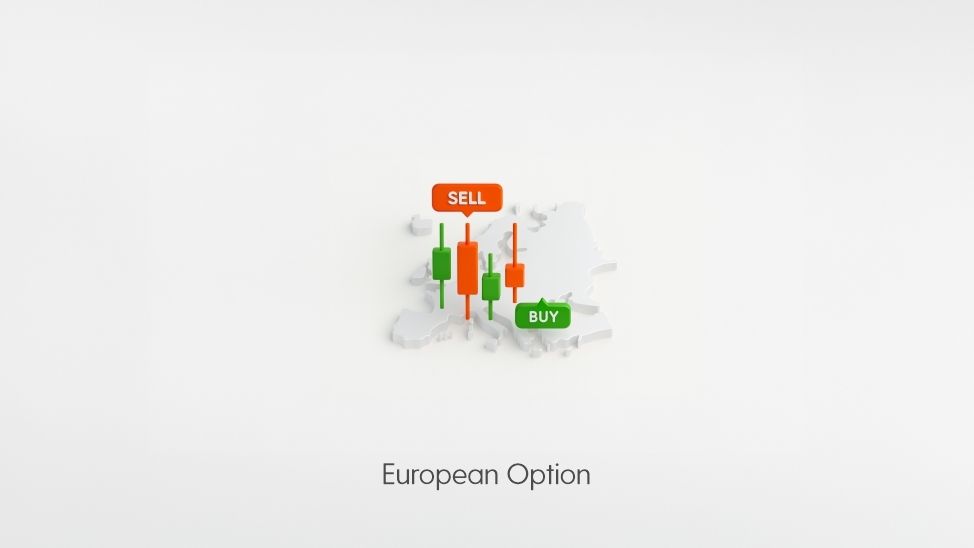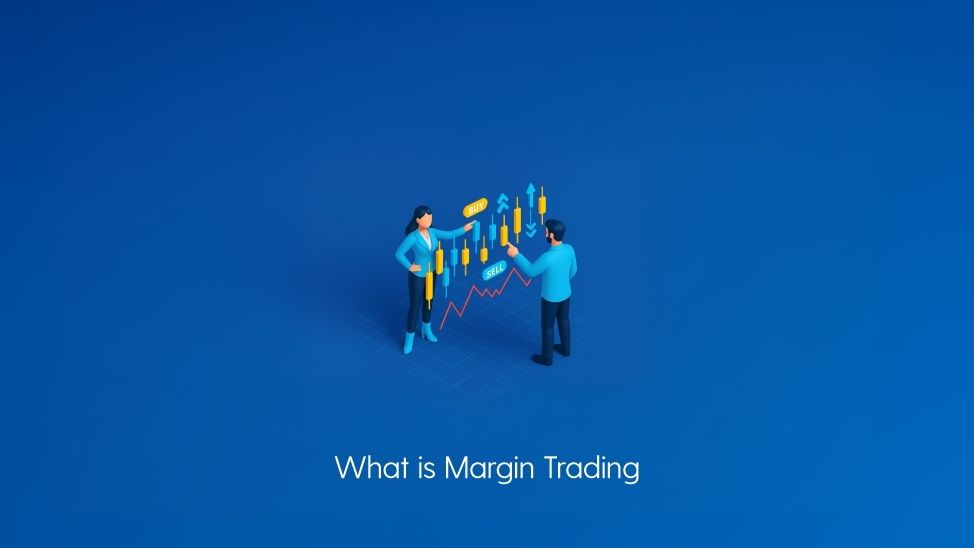European Option: The Complete Guide

- Published Date: November 20, 2025
- Updated Date: November 27, 2025
- By Team Choice
European options are widely used in global markets, and they play a crucial role in India’s derivatives market as well. Whether you're a new trader or someone exploring advanced financial instruments, understanding how European options work and how they differ from American options is essential.
In this blog, we’ll break down what a European option is, how they function, their benefits and drawbacks, popular trading strategies, and a simple example of how they are exercised, helping you understand their role within the broader future and option market.
What is a European Option?
A European option is a type of option contract that can be exercised only on the day it expires. This means the investor has the right, without any obligation, to buy or sell the underlying asset at a predetermined price, known as the strike price, but only on the final day of the contract. All exchange-traded options contracts in India, including Index Options (Nifty, Bank Nifty) and Stock Options, are European-style.
The buyer may choose to exercise the contract if it is profitable, or simply allow it to lapse if it isn’t. The key idea is that the holder controls the choice but must make that decision strictly on the contract’s final day.
Types of European Options
The two primary categories of European options are European call options and European put options:
1. European Call Option: This option allows the buyer to purchase an underlying asset at a preset strike price, but only when the contract expires. It’s a right, not an obligation. Investors usually choose a call option when they expect the asset’s price to increase above the strike price by the time the option expires. A call option is used when the market value ends up higher than the strike price, enabling the buyer to acquire the asset at a more favourable, lower price.
2. European Put Option: A European put option gives the holder the right to sell the underlying asset at a predetermined strike price on the expiration date. Traders generally buy put future and options when they anticipate the asset’s price will fall below the strike price before the contract expires. A put is exercised when the market price drops below the strike price, allowing the buyer to sell the asset for more than its current market value.
How Do European Options Work?
In the Indian derivatives market, European options follow a straightforward structure because they can be exercised only on their expiration date (typically Thursday for NSE derivatives, subject to holiday changes). When an investor buys a European option, whether it’s a call or a put, they pay a premium to secure the right to buy or sell the underlying asset at a predetermined strike price.
Once the contract is active, the investor cannot exercise it at any point before expiry. Instead, they must wait until the final day of the contract. On that day, the option’s value is determined by comparing the strike price with the market price of the underlying asset:
- If the option has intrinsic value (it’s “in the money”), the holder may choose to exercise it or receive cash settlement, depending on how the contract is structured.
- If it has no value (it’s “out of the money”), the option simply expires worthless, and the investor loses only the premium paid.
Because early exercise isn’t allowed, European options are often easier to analyse and price. This makes them popular in markets such as index options, where predictability and simpler valuation models play an important role.
Advantages of European Options
European options come with several benefits that make them appealing to both beginner and experienced traders:
1. Lower Premium Costs: Since European options cannot be exercised before expiry, they usually carry a lower premium compared to American options. This makes them more cost-efficient for investors who want exposure to market movements without paying a high upfront cost.
2. Simple and Predictable Structure: The restriction on early exercise makes European options easier to understand and manage. Traders know exactly when the option can be exercised, which simplifies planning and reduces the likelihood of unexpected outcomes.
3. Easier to Value: Pricing models, especially the Black-Scholes model, work more accurately with European-style options. This leads to more reliable pricing and helps traders make better decisions.
4. Lower Risk of Early Assignment: Because early exercise is not allowed, investors never have to worry about sudden assignments before they are ready. This stability is beneficial in hedging strategies.
5. Common in Index Options: Many major stock index options are European-style, offering standardised settlement, reduced volatility of early exercise, and smoother expiration processes.
Disadvantages of European Options
While European options offer structure and predictability, they also come with certain drawbacks that traders should consider:
1. No Early Exercise Flexibility: The biggest limitation is that you cannot exercise the option before its expiration date. Even if market conditions move strongly in your favour, you must wait until expiry, which may limit profit opportunities.
2. Limited Tactical Use: Because early exercise isn’t allowed, European options cannot be used for strategies that depend on timing advantages, such as capturing dividends or reacting quickly to sudden price movements.
3. Not Always Available for All Assets: European-style contracts are more common in indices than in individual stocks. This means investors may have fewer choices if they prefer this style for stock-based trades.
4. Potential Missed Opportunities: If the market price is favourable before expiry but reverses by the expiration date, the option holder may miss a profitable moment simply because early exercise is not permitted.
Popular Trading Strategies Using European Options
European options can be used in several effective trading strategies, especially because their fixed exercise rule makes outcomes more predictable.
Here are some commonly used approaches:
1. Long Call and Long Put Positions:
Investors often buy European calls or puts to take a clear directional view of the market.
- A long call is used when you expect prices to rise.
- A long put is used when you expect prices to fall.
These strategies are straightforward and limit the maximum loss to the premium paid.
2. Spread Strategies (Bull and Bear Spreads):
Spreads involve buying one option and selling another with a different strike price.
- Bull spreads use calls to profit from moderate upward movement.
- Bear spreads use puts to benefit from moderate downward movement.
European options are well-suited here because their fixed expiration simplifies planning.
3. Calendar (Time) Spreads:
Calendar spreads use options with the same strike price but different expiration dates.
European options are preferred for this strategy because the no-early-exercise rule eliminates uncertainty, making time-based predictions easier.
4. Protective Put Strategy:
Investors holding a portfolio or index exposure may buy a European put to protect themselves from potential declines. Since many index options are European-style, this strategy is commonly employed to hedge against downside risk.
5. Cash-Secured Put Selling:
Traders may sell European puts if they’re willing to buy the underlying asset at a lower price. European-style settlement reduces the risk of early assignment, making this approach more predictable.
Outcome on Expiry Day
Let’s say on expiration day, the index closes at ₹18,500.
Now compare the strike price and market price:
- Market Price: ₹18,500
- Strike Price: ₹18,000
Since the market price is higher, your option is in the money.
Profit Calculation
Intrinsic Value: 18,500 – 18,000 = ₹500
Net Profit: ₹500 – ₹150 (premium) = ₹350 per unit
You do not need to buy the actual asset. Instead, the profit is typically settled in cash, which is common for European-style index options.
If the Market Price Had Been Lower?
If the index closed below the strike price, say at ₹17,800, the option would be out of the money. In that case:
- You simply do not exercise the option.
- Your loss is limited to the premium paid, which is ₹150.
Note: Stock options in India may involve physical settlement on expiry, unlike index options, which are always cash-settled.
Conclusion
European options may offer less flexibility than their American counterparts, but their predictable exercise structure makes them easier to understand, price, and plan around. Whether used for hedging or taking directional market views, these options give traders a cost-effective way to participate in the derivatives market.
By understanding how European calls and puts work, their benefits and limitations, investors can choose the strategy that best fits their goals. With the right approach, European options can become a valuable tool in a well-balanced trading or investment portfolio.
Recommended for you

FII DII Data - Live Data

Share Market Prediction For Tomorrow

SIP vs Index Fund: Key Difference Explained
